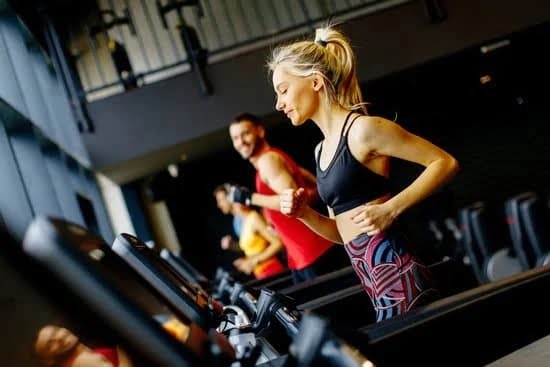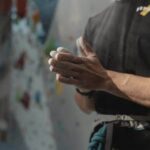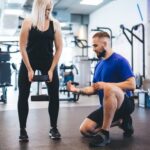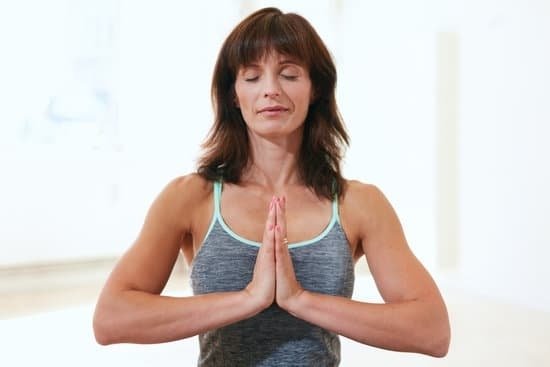Skill-related fitness is often associated with athletes, as it plays a crucial role in their performance and success in various sports. However, can others besides athletes benefit from skill-related fitness? The answer is a resounding yes. Skill-related fitness encompasses several components that are not only relevant to athletic endeavors but also important for individuals in everyday life, physical rehabilitation, mental health, the aging population, and even occupational settings.
When we think of skill-related fitness, qualities such as agility, balance, coordination, power, reaction time, and speed come to mind. These components are vital for athletes because they enable them to excel in their respective sports and gain a competitive edge over their opponents. Athletes train extensively to improve these skills through specific exercises and drills tailored to their sport’s demands.
But what about the rest of us? Can we benefit from developing these skills even if we’re not professional athletes? Absolutely.
In fact, skill-related fitness has numerous applications that extend beyond the realm of sports performance. Whether you’re an office worker or stay-at-home parent, improving your agility can help you navigate crowded city streets or keep up with your children’s energy levels. Enhancing your balance and coordination can improve your posture and reduce the risk of falls as you age.
Moreover, skill-related fitness can also play a significant role in physical rehabilitation after injuries or surgeries. Rehabilitation programs often incorporate exercises that focus on restoring strength, coordination, and flexibility – all components of skill-related fitness. By incorporating these exercises into their recovery routine, individuals can regain function faster and return to their daily activities more effectively.
So yes, while athletes may be the most visible beneficiaries of skill-related fitness training, its benefits extend far beyond just competitive fields. From preventing accidents through improved reaction time to enhancing mental well-being by reducing stress levels or increasing self-confidence through dance or martial arts activities – skill-related fitness has something valuable to offer everyone. It’s time we explore the wider application and untapped potential of skill-related fitness for individuals in various walks of life.
Definition of Skill-Related Fitness
Skill-related fitness refers to the physical attributes and abilities that contribute to an individual’s performance in various physical activities or sports. These components include agility, balance, coordination, power, reaction time, and speed. Each of these components plays a crucial role in determining an individual’s overall skill level and their ability to excel in specific activities.
Agility is the ability to change direction quickly and efficiently. It involves the combination of speed, balance, power, and coordination to move rapidly and effectively while maintaining control over movements. This component is particularly important in sports that require sudden changes in direction or quick evasive maneuvers, such as soccer or basketball.
Balance is the ability to maintain stability and control over one’s body position. It involves the coordination of sensory information from various systems within the body, including vision, proprioception (awareness of body position), and the vestibular system (inner ear). Good balance is essential for activities that require stability, such as standing on one leg or performing yoga poses.
Coordination refers to the ability to integrate different movements smoothly and efficiently. It involves the synchronization of different body parts in order to perform complex tasks accurately and with precision. Activities such as dancing or playing a musical instrument require excellent coordination between different limbs or body segments.
Power is the ability to generate force quickly. It combines strength with speed to produce explosive movements. Power is crucial in sports that involve explosive actions, such as jumping, throwing, or sprinting.
Reaction time is the amount of time it takes for an individual to respond to a stimulus. It includes both simple reactions (responding quickly to a single signal) and choice reactions (selecting an appropriate response from multiple options). Reaction time is particularly important in sports that require quick decision-making abilities, such as tennis or boxing.
Speed refers to how fast an individual can move their body from one point to another. It involves a combination of stride length (the distance covered with each step or stride) and stride frequency (the number of steps taken per unit of time). Speed is a critical component in sports that require quick bursts of acceleration, such as sprinting or football.
Understanding the different components of skill-related fitness is important for athletes and individuals interested in improving their physical abilities. By targeting specific components through training and practice, individuals can enhance their overall performance and excel in various activities. Additionally, non-athletes can benefit from improving these components to promote better physical health, prevent injuries, and maintain an active lifestyle.
Importance of Skill-Related Fitness in Sports Performance
Athletes across various sports rely on skill-related fitness to enhance their performance and gain a competitive edge in their respective games. Skill-related fitness refers to the ability to perform specific movements or skills with precision, control, and efficiency, and it encompasses several components such as agility, balance, coordination, power, reaction time, and speed.
Firstly, agility is crucial for athletes as it allows them to quickly change direction or position during gameplay. This skill enables athletes to evade opponents or defenders effectively and make swift movements on the field. Secondly, balance plays a key role in sports performance as it provides stability and control over body movements. Athletes with excellent balance are less likely to stumble or fall during intense physical activities like jumping or running.
Furthermore, coordination is essential for athletes to synchronize their movements efficiently. It enables them to execute complex actions that require multiple body parts working together seamlessly. The precise timing of movements required in sports such as golf swings or tennis serves necessitates strong coordination skills. Additionally, power is vital for explosive actions like throwing a ball or jumping high. Athletes need sufficient power in their muscles to generate force quickly and execute dynamic movements at a high intensity level.
| Components | Description |
|---|---|
| Agility | The ability to change direction or position quickly during gameplay. |
| Balance | The ability to maintain stability and control over body movements. |
| Coordination | The ability to synchronize multiple body parts’ movements efficiently. |
Skill-Related Fitness for Non-Athletes
While skill-related fitness is often associated with athletes, its benefits extend far beyond the sports field. Individuals who are not involved in competitive sports can still greatly benefit from developing their skill-related fitness components. This section will explore how skill-related fitness can positively impact everyday life for non-athletes.
Improving Reaction Time to Prevent Accidents
Reacting quickly to unexpected situations is crucial in daily life, whether it’s avoiding a car accident or catching a falling object. Skill-related fitness training that focuses on improving reaction time can be particularly beneficial for non-athletes. By practicing exercises that enhance cognitive processing speed and reflexes, individuals can sharpen their ability to respond swiftly and effectively in unpredictable scenarios. This heightened reaction time can help prevent accidents and potentially save lives.
Enhancing Balance and Coordination for Better Posture
Maintaining proper balance and coordination play essential roles in maintaining overall physical health and well-being. Skill-related fitness exercises that target balance and coordination can significantly improve posture, reducing the risk of musculoskeletal disorders such as back pain and joint injuries. Non-athletes who incorporate activities like yoga, tai chi, or Pilates into their routines can develop better body awareness and control, leading to improved posture both during static positions and dynamic movements.
Increasing Power for Daily Tasks
Power refers to the ability to produce force quickly, which plays a vital role in performing various daily tasks. Non-athletes often underestimate the importance of power outside of sports; however, it is necessary for functional movements such as lifting heavy objects, pushing or pulling items, or even climbing stairs.
Skill-related fitness training that focuses on power development, such as resistance training or plyometrics, can improve an individual’s ability to generate force efficiently. As a result, non-athletes can experience enhanced physical performance and efficiency in performing their daily activities.
Skill-Related Fitness for Physical Rehabilitation
Physical rehabilitation plays a crucial role in the recovery process for individuals who have experienced injuries or undergone surgeries. While skill-related fitness is often associated with athletes, it can also be incredibly beneficial for those in physical rehabilitation. Skill-related fitness exercises can aid in the recovery process by improving agility, balance, coordination, reaction time, and power.
Improving Agility
Agility is the ability to change direction quickly and efficiently. For individuals in physical rehabilitation, improving agility can enhance their ability to perform daily tasks and reduce the risk of falls or accidents. Agility exercises such as ladder drills, cone drills, and shuttle runs can help individuals regain their mobility and confidence in moving around.
Enhancing Balance and Coordination
Balance and coordination are key components of skill-related fitness that can greatly impact an individual’s ability to navigate their environment safely. For individuals in physical rehabilitation, focusing on balance and coordination exercises can improve their overall posture and stability. Exercises such as single-leg balances, yoga poses, and Tai Chi movements can help individuals regain their sense of equilibrium and reduce the risk of falls.
Increasing Reaction Time and Power
Reaction time refers to the speed at which an individual responds to a stimulus. In physical rehabilitation, enhancing reaction time is important for regaining functional abilities and preventing further injury. Reaction time exercises like catching a ball or using reaction balls can help individuals improve their response time in daily activities.
Power is another component of skill-related fitness that is essential for individuals in physical rehabilitation. Power refers to the ability to exert force quickly, which is necessary for activities such as getting up from a chair or climbing stairs. Power training exercises like squats, lunges, and medicine ball throws can help individuals regain strength in their muscles and improve their power output.
Skill-Related Fitness for Mental Health
In addition to its physical benefits, skill-related fitness activities have been found to have a significant impact on mental health. Engaging in activities such as dancing or martial arts can promote mental well-being by reducing stress, increasing self-confidence, and improving focus.
One of the ways skill-related fitness activities contribute to improved mental health is through stress reduction. Physical activity has been shown to release endorphins, which are known as the body’s natural feel-good chemicals.
Regular participation in skill-related fitness activities helps individuals better manage stress levels and reduce symptoms of anxiety and depression. The rhythmic movements of dance or the discipline required in martial arts provide an outlet for emotional expression and allow individuals to release tension in a healthy way.
Furthermore, skill-related fitness activities can boost self-confidence. As individuals engage in these activities and develop their skills over time, they gain a sense of accomplishment and improve their self-esteem. Dancing or mastering martial arts techniques requires perseverance and dedication, which can lead to a belief in one’s own capabilities both physically and mentally. This increased confidence can also transfer into other areas of life, allowing individuals to face challenges with a more positive mindset.
Additionally, engaging in skill-related fitness activities improves focus and concentration. Many dance styles and martial arts require participants to maintain precise movements or execute complex sequences with speed and accuracy. This level of concentration helps individuals tune out distractions from their surroundings and enhances their ability to focus on the present moment. Regularly practicing these activities can improve cognitive function and attention span, leading to better productivity in daily tasks.
Overall, skill-related fitness activities like dancing or martial arts offer numerous mental health benefits beyond physical fitness gains. By reducing stress levels, increasing self-confidence, and improving focus, these activities contribute to improved overall well-being. Incorporating skill-related fitness into one’s lifestyle can be a valuable tool for maintaining mental health and fostering a positive mindset.
Skill-Related Fitness for Aging Population
As individuals age, maintaining physical fitness becomes increasingly important for overall health and well-being. Skill-related fitness is not only beneficial for athletes but also plays a crucial role in the lives of older adults. In this section, we will discuss the significance of skill-related fitness in the aging population and how it can help maintain independence, prevent falls, and enhance the overall quality of life.
One of the main concerns for older adults is maintaining their independence. Skill-related fitness can greatly contribute to this goal by improving agility, balance, coordination, and reaction time. These components are essential in performing activities of daily living such as walking, climbing stairs, or reaching for objects. By incorporating skill-related fitness exercises into their routine, older adults can enhance their functional abilities and reduce the risk of dependence on others.
Another important aspect that skill-related fitness addresses in the aging population is fall prevention. Falls are a leading cause of injury among older adults and can have serious consequences on their physical health and emotional well-being. By focusing on balance and coordination exercises, older adults can improve their stability and reduce the likelihood of falls. Additionally, practicing reaction time exercises can help them react faster to unexpected situations, minimizing their chances of tripping or stumbling.
Furthermore, skill-related fitness has a direct impact on enhancing the overall quality of life for older adults. Engaging in activities such as dancing or martial arts that require agility and coordination can provide immense joy and satisfaction.
Physical activity has been proven to release endorphins, which are known as “feel-good” hormones that promote mental well-being. By participating in skill-related fitness activities tailored to their abilities and interests, older adults can experience improved mood, increased self-confidence, and reduced stress levels.
Skill-Related Fitness in Occupational Settings
Occupational settings demand a certain level of physical fitness and skill-related abilities from workers in various professions. Firefighters, police officers, and surgeons are examples of individuals who require agility, coordination, and reaction time to effectively perform their job roles. Skill-related fitness plays a crucial role in these occupations as it directly affects the safety and success of the tasks performed.
Firefighters often encounter physically demanding situations that require them to navigate through hazardous environments swiftly. Agility is crucial for maneuvering through tight spaces or obstacles while maintaining balance and coordination. A firefighter’s ability to react quickly to changing conditions can be a matter of life or death, making reaction time an essential skill-related fitness component.
Police officers also benefit from skill-related fitness in their line of work. Physical agility is vital for pursuing suspects on foot, navigating challenging terrains, or engaging in self-defense situations. Coordination is necessary during handcuffing techniques or firearm use while maintaining balance for proper body positioning during arrests or confrontations. Additionally, quick reaction time enables police officers to respond promptly to potential threats or emergencies.
Similar to firefighters and police officers, surgeons rely on skill-related fitness for optimal performance during complex surgical procedures. Surgeons must possess precise hand-eye coordination and dexterity to manipulate instruments within small incisions accurately. Their ability to react quickly to unexpected changes during surgery is critical for ensuring patient safety and achieving successful outcomes.
Conclusion
In conclusion, skill-related fitness is not only limited to athletes but can also benefit individuals in various aspects of life. The different components of skill-related fitness, including agility, balance, coordination, power, reaction time, and speed, play a crucial role in sports performance. Athletes utilize these skills to excel in their respective sports and gain a competitive edge.
However, skill-related fitness extends beyond the realm of athletics. Non-athletes can also reap the benefits of skill-related fitness in their everyday lives. Improving reaction time can help prevent accidents and enhance safety in various situations. Enhancing balance and coordination can lead to better posture and stability, reducing the risk of falls and injuries. Increasing power translates to improved performance in daily tasks and activities.
Furthermore, skill-related fitness exercises have proven to be valuable tools for physical rehabilitation after injuries or surgeries. These exercises can aid individuals in regaining mobility, strength, and coordination while promoting faster recovery and reducing the risk of reinjury.
Additionally, engaging in skill-related fitness activities has positive effects on mental health. Dancing or practicing martial arts not only improve physical abilities but also reduce stress levels, increase self-confidence, and enhance focus and concentration.
Skill-related fitness is especially important for the aging population as it helps maintain independence by preventing falls and enhancing overall quality of life. Incorporating exercises that target balance, coordination, and reaction time can significantly improve functional ability and ensure a higher level of well-being.
Finally, skill-related fitness is not limited to recreational pursuits but also has implications for occupational settings. Professions such as firefighters, police officers, and surgeons require high levels of agility, coordination, reaction time – all elements encompassed within skill-related fitness – to carry out their job roles effectively.
In summary,”Can Others Besides Athletes Benefit From Skill-Related Fitness?” The answer is yes; everyone can reap the benefits that skill-related fitness offers.
By improving physical abilities such as agility, balance, coordination, power, reaction time, and speed, individuals can enhance their overall physical performance, prevent accidents, aid in rehabilitation, promote mental well-being, maintain independence as they age, and excel in various occupational roles. Therefore, skill-related fitness should be encouraged and integrated into the lives of both athletes and non-athletes alike.
Frequently Asked Questions
Can Others Besides Athletes Players Benefit From Skill Related Fitness?
Yes, skill-related fitness can benefit individuals beyond just athletes and players. Skill-related fitness refers to the components of physical fitness that are specifically related to one’s ability to perform well in sports or activities that require a high level of skill. While these components are often developed and honed by athletes, they are also important for individuals who participate in recreational activities, physical therapy, and rehabilitation programs.
For example, someone recovering from an injury could benefit from improving their agility or balance through targeted skill-related fitness exercises. Additionally, individuals who engage in activities like dancing, martial arts, or yoga can enhance their performance by developing skills such as coordination and flexibility.
How Can Others Benefit From Skill Related Fitness?
Others can benefit from skill-related fitness in several ways. Firstly, it helps improve overall physical performance regardless of the activity or sport someone is engaged in. By working on components such as agility, balance, power, reaction time, coordination, and speed through targeted training exercises, individuals can enhance their abilities and excel in their chosen pursuits.
Secondly, practicing skill-related fitness can lead to better body control and injury prevention. Improved balance and coordination help reduce the risk of falls or accidents during physical activity. Lastly, investing time in skill-related fitness can have positive effects on overall health and well-being by promoting physical strength, cardiovascular health, flexibility, and mental focus.

Passionate about providing useful information to anyone with an interest in the field of Personal Training, I strive to pass on to our readers quality information and to answer any questions about Personal Trainers, the work they do and how to become one.





